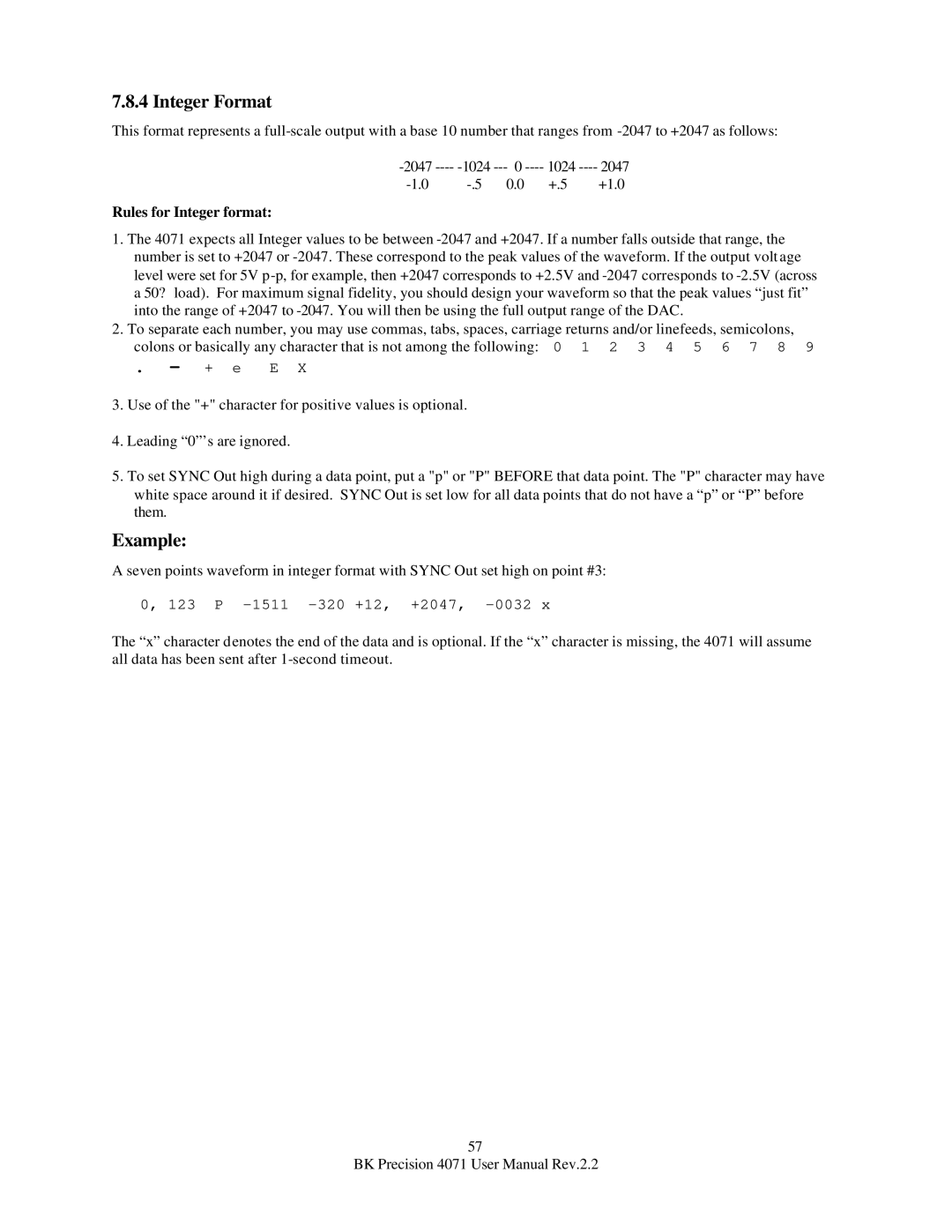7.8.4 Integer Format
This format represents a
1024 | 2047 | |||
0.0 | +.5 | +1.0 |
Rules for Integer format:
1.The 4071 expects all Integer values to be between
2.To separate each number, you may use commas, tabs, spaces, carriage returns and/or linefeeds, semicolons,
colons or basically any character that is not among the following: 0 1 2 3 4 5 6 7 8 9
. - + e E X
3.Use of the "+" character for positive values is optional.
4.Leading “0”’s are ignored.
5.To set SYNC Out high during a data point, put a "p" or "P" BEFORE that data point. The "P" character may have white space around it if desired. SYNC Out is set low for all data points that do not have a “p” or “P” before them.
Example:
A seven points waveform in integer format with SYNC Out set high on point #3:
0, 123 P
The “x” character denotes the end of the data and is optional. If the “x” character is missing, the 4071 will assume all data has been sent after
57
BK Precision 4071 User Manual Rev.2.2
